De-growth is a term most people find unpalatable. If not alarming. We were brought up with the idea that relentless growth is the only economic force that matters. Growth, we’ve been told, means increased living standards. And yet, it would be irresponsible to continue ignoring the massive human and environmental costs of our infatuation with economic growth. Especially now that the pandemic has people dreaming of “the world after.”

DISNOVATION.ORG & Clémence Seurat, Post Growth Toolkits (The Interviews), 2020
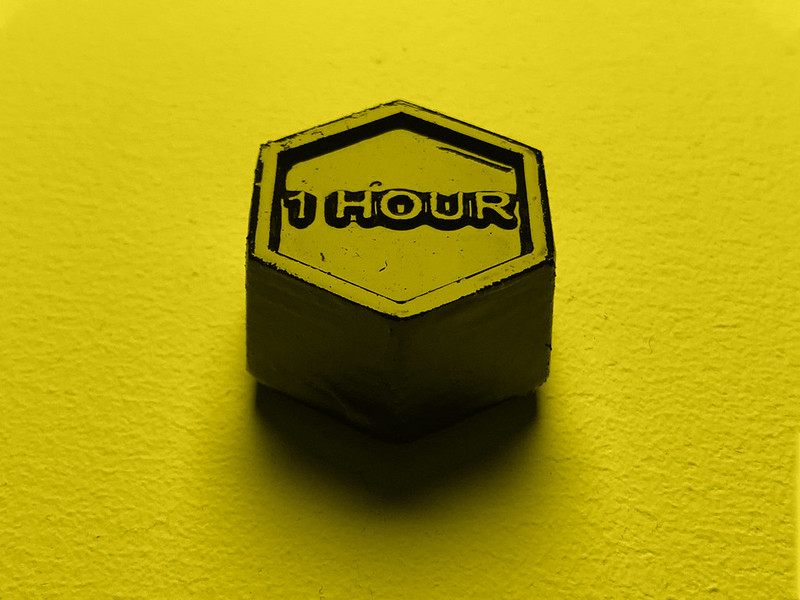
DISNOVATION.ORG & Baruch Gottlieb, Energy Slave Token (Human Labor To Fossil Fuel Conversion Units), 2020. Photo: DISNOVATION.ORG
Economists and policymakers, however, argue that de-growth is little more than a naive and unrealistic ideology that can only lead to sudden mass joblessness, infrastructure collapse, widespread hunger and the breakdown of everything that makes our existence efficient and pleasant.
So where do you turn to when you’re a citizen seduced by the idea of an economy that does not inflate relentlessly, does not feed on finite resources and on the exploitation of the living? What leverage is available for transformative practices and imaginaries to overcome the continuous growth of our energy consumption?
A good place to start is the exhibition POST GROWTH at iMAL in Brussels where the DISNOVATION.ORG collective together with Baruch Gottlieb, Clémence Seurat, Julien Maudet and Pauline Briand invite visitors to question every Silicon Valley word, every technosolutionist promise and that ingrained conviction that it’s growth way or the highway. If you can’t make it to Brussels, do check out their POST GROWTH TOOLKIT, an online collection of interviews with thinkers whose research explores the forms that a post-fossil society could take and the challenges we need to confront to get there. The online resource is an incredibly inspiring guide to help you navigate concepts like Collapse Informatics and self-obviating systems as well as issues such as the need to base our decisions on the 7th Generation Principle, the fact that we won’t be able to externalise the most extreme forms of environmental destructions for much longer. Or, most crucially, how men peeing on walls in the city streets of Paris contributed to geodiversity.
Negatechnology, Interview with Bill Tomlinson
Ideology of Growth. Interview with Valerie Olson
The POST GROWTH show grapples with overwhelming issues that would normally make me want to bury my head in the sand. But because the works exhibited weave practical and theoretical ideas, depressing facts and uplifting concepts, healthy scepticism and appeals to our imaginations, individual decisions and collective actions, I emerged from my visit at iMAL with a sense of hope. And that is not a feeling I experience often these days.
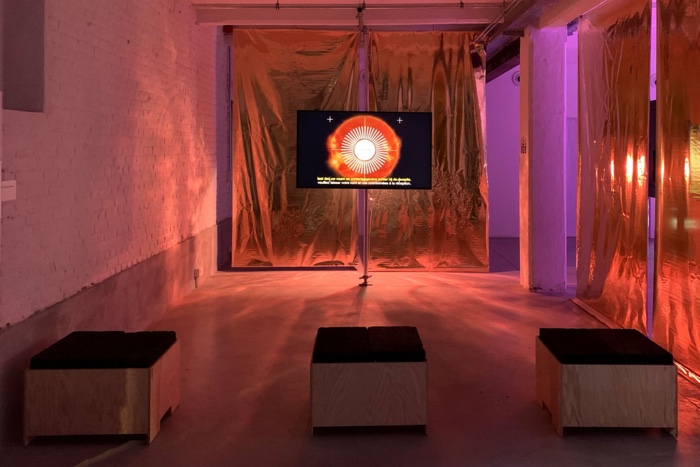
DISNOVATION.ORG & Baruch Gottlieb, Solar Share (The Story)
The works I found most thought-provoking where the ones from the Solar Share series in which DISNOVATION.ORG together with artist, researcher and curator Baruch Gotlieb examines the radical implications of a speculative economic model based, not on fossil fuels, but on the energy emitted by the Sun.
Instead of being hooked on resources that are not infinite, the economic model proposed by Solar Share is intimately connected to the elementary sources of energy coming from the Sun, the Earth and the cosmos. The research project aims to revise the prevailing narratives with an acknowledgement of the material conditions required for the persistence of our form of life in the biosphere.
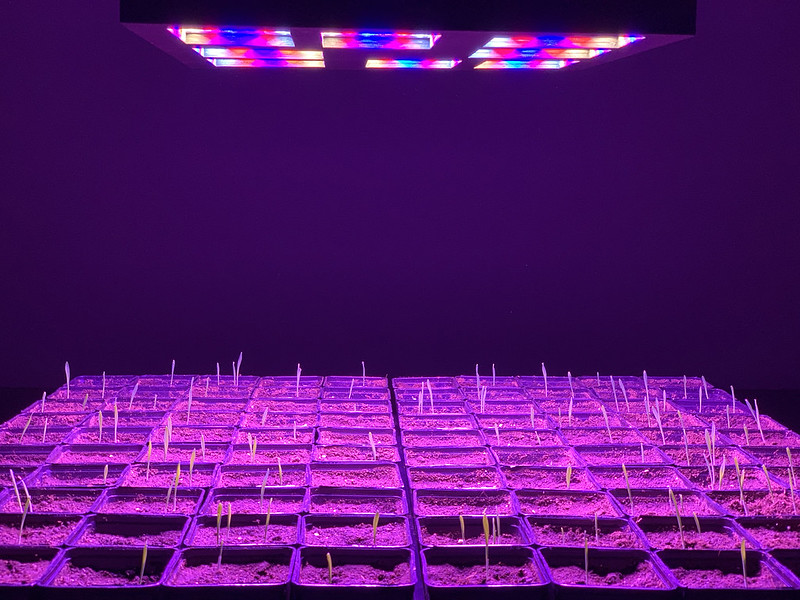
DISNOVATION.ORG & Baruch Gottlieb, Solar Share (The Farm), 2020. Photo: DISNOVATION
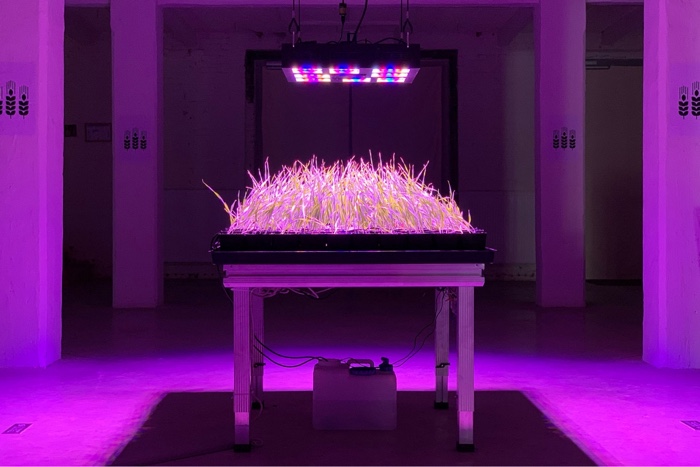
DISNOVATION.ORG & Baruch Gottlieb, Solar Share (The Farm), 2020
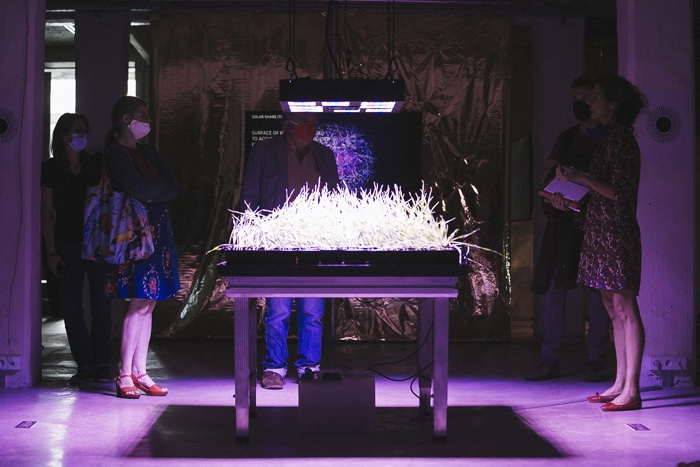
Exhibition view at iMAL by Caroline Lessire
The Solar Share (The Farm) installation investigates vertical hydroponic farming alluring promises of food security in urban centres, in the Arctic, underground and in the middle of the desert. Leafy greens, tomatoes, peppers, cucumbers, herbs and other high-water content produce grow without soil, without pesticides and with far less water than conventional agriculture requires. Unfortunately, this artificially controlled environment is energy-intensive, it requires constant air conditioning and LED lighting. Furthermore, hydroponic-grown produces obtain their nutrients from the solution added, not from the soil which means that they never get in contact with many of the billions of microorganisms that inhabit the soil and stimulate a healthy microbiome.
Hydroponics might be part of the solution to feeding the world -especially if you don’t take the externalities into account- but they cannot feed densely-populated cities. For that, we need vast areas of cropland planted with grains, legumes, root, sugar and oil crops, the produce of which is to be eaten directly or fed to animals that produce meat, milk and eggs.
Solar Share (The Farm) takes the shape of 1 square meter experiment which makes visible the vast technical infrastructure and energy flows required to grow a food staple like wheat in an artificial environment. From a systemic point of view, the “miracle” of soil-less farming is heavily dependent on cheap fossil energy to function. Even if the farms were powered by solar energy, they would still rely on the polluting extraction of minerals and other outsourced (and unaccounted for) contaminating processes distributed all over the globe. The installation challenges the agroindustry’s inflated claims by bringing to light the layers of invisibilised interdependencies and by providing a speculative reference reckoning of the incalculable ecosystem services at play in conventional agriculture.
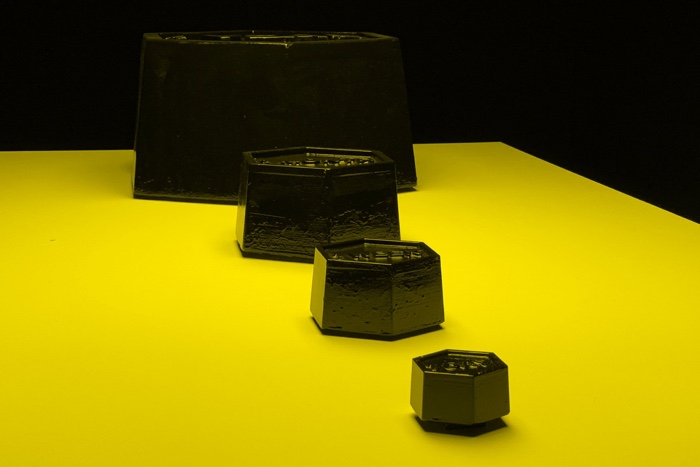
DISNOVATION.ORG & Baruch Gottliebb, Energy Slave Token (Human Labor To Fossil Fuel Conversion Units), 2020
In 1940, Buckminster Fuller introduced the term energy slave to describe the energy required to power the modern lifestyle. The energy requirements for any lifestyle can be calculated as a number of “energy slaves” equivalent to the number of human labourers whose muscles and stamina would otherwise be needed to produce the same amount of energy. The concept puts us in the very uncomfortable shoes of a slave master. It has been estimated that the average European lords over the equivalent of 400-500 “energy slaves” 24 hours a day to keep our homes and infrastructures functioning, to grow our food, pump our water and manufacture our goods.
The Energy Slave Token consists of a series of weights made of bitumen, which are the energy equivalents to specific quantities of physical human labour time (ie. 1 hour, 1 day, 1 week, 1 month, 1 year, 1 life). Making energy more tangible than any kWh and other gigajoules ever could, the weights visualise the orders of magnitude that separate the labour force generated by human bodies from the energy exploited mostly from the fossil fuels that power the technosphere. These open source tokens are designed to be easily replicated, used and distributed without restriction.
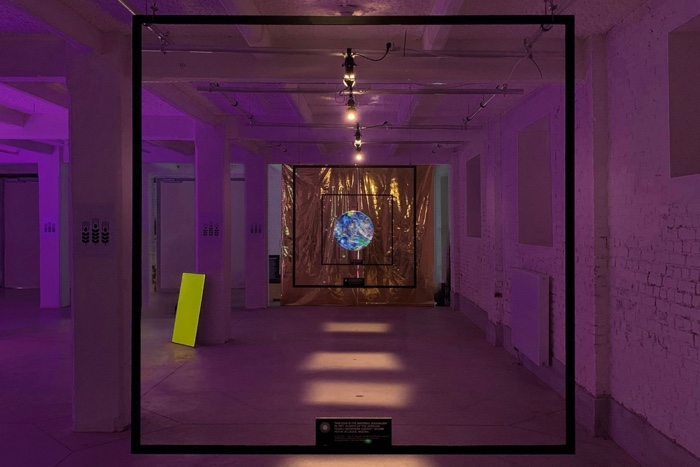
DISNOVATION.ORG & Baruch Gottlieb, Solar Share (The Coins), 2020
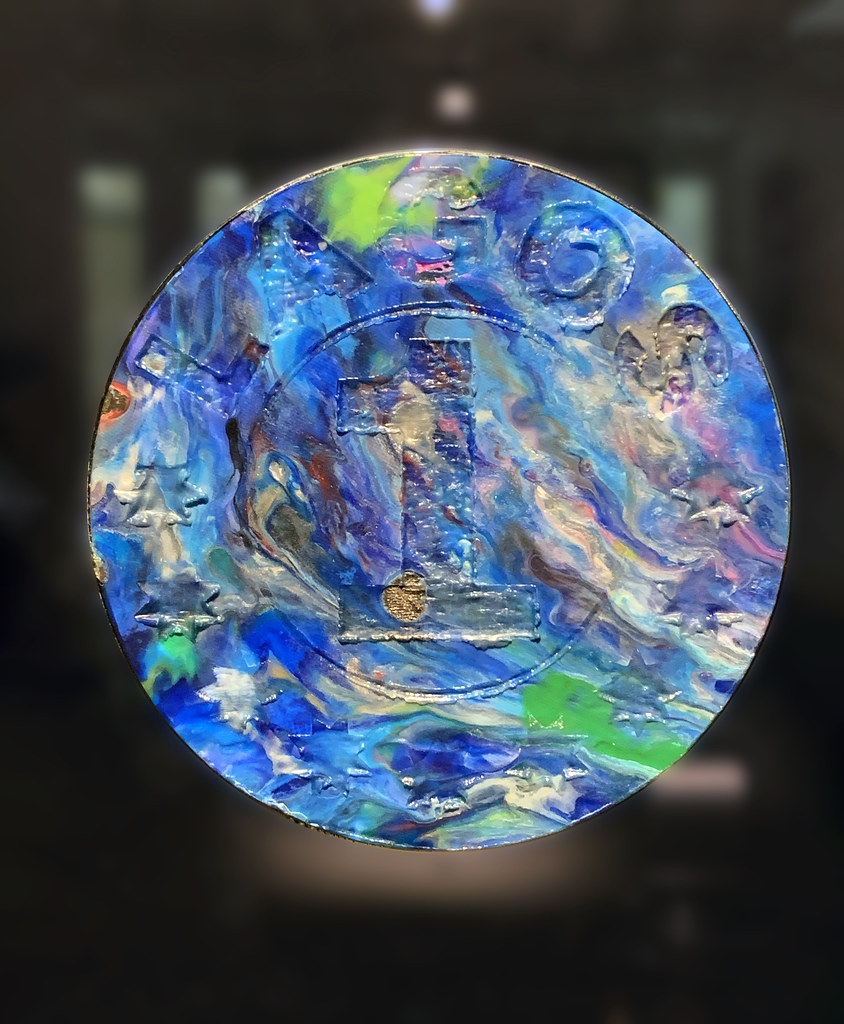
DISNOVATION.ORG & Baruch Gottlieb, Solar Share (The Coins), 2020. Photo: DISNOVATION.ORG
Solar Share (The Coins), the third work in the Solar Share series, is the one I can’t stop thinking about. Allow me to mostly copy/paste its description:
The concept of Emergy attempts a comprehensive accounting of the energy involved -directly or indirectly- in the reproduction of a product or service. With Emergy, factors such as extremely slow and vast processes that tend to be overlooked can be acknowledged as vital contributions to life.
Some areas of the world get more sunlight than others, some “use” more sunlight than others. Europe uses considerably more energy than it receives from the sky through imports in various concentrated forms, principally petroleum, coal and natural gas. Brussels is one of the least sunny cities in Europe, receiving only 3 kWh/m2 on an average day, and only 1000 kWh/m2 a year, a fact that its energy consumption doesn’t reflect.
Solar Share coins are made of the ubiquitous PET plastic, a petroleum bi-product, ancient sunlight concentrated in organic material over millions of years. A few grams of PET has the same embodied energy as 1m2 of yearly solar irradiation in Brussels.
How might our understanding of economics change if the instruments we used for money had an equivalent value to the solar energy required to materially produce them? As a speculative response, each Solar Share coin embodies the average solar irradiation received at a specific urban location.
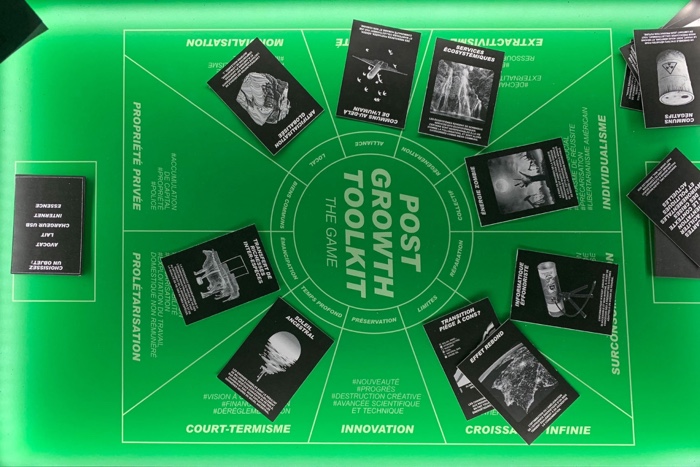
DISNOVATION.ORG, Julien Maudet, Pauline Briand, Clémence Seurat & Baruch Gottlieb, Post Growth Toolkit (The Game), 2020
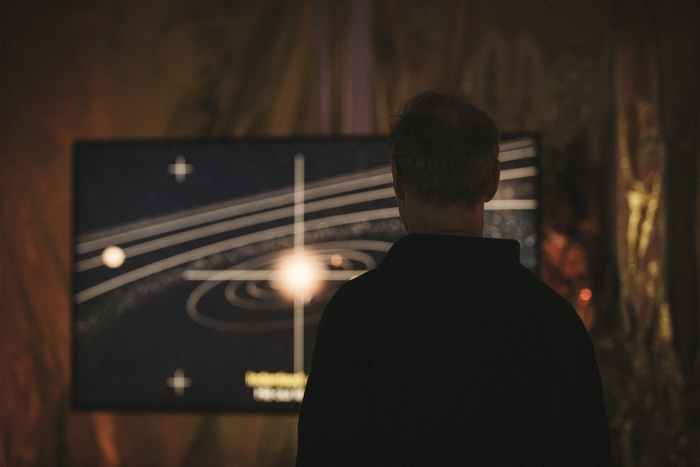
Post Growth. Exhibition view at iMAL by Caroline Lessire
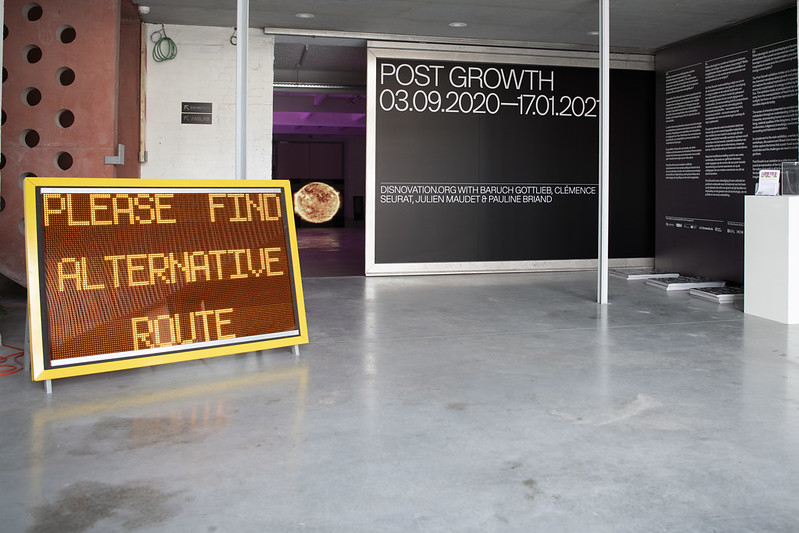
Post Growth. Exhibition view at iMAL. Photo: DISNOVATION
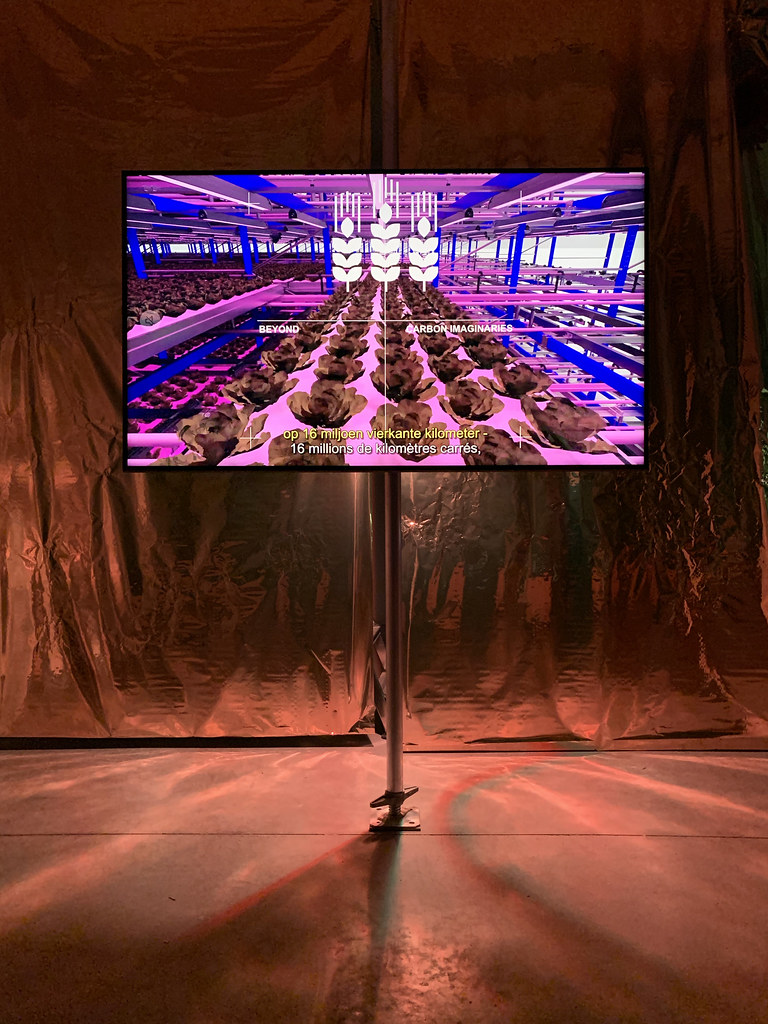
Post Growth. Exhibition view at iMAL. Photo: DISNOVATION
POST GROWTH remains open until 17 January 2021 at iMAL in Brussels.
More photos on DISNOVATION flickr page.
Previous DISNOVATION stories: Predictive Art Bot. A call for artworks that interpret AI-generated concepts, Shanzhai Archeology: defying our standardized technological imagination, Disnovation, an inquiry into the mechanics and rhetoric of innovation, etc.
